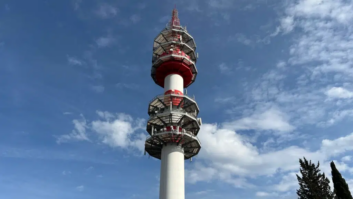
Darren Willsher is communications manager for WorldDAB.
GUEST COMMENTARY
By Darren Willsher
The author is communications manager for WorldDAB.
LONDON — “The world’s first digital radio switchover in Norway has been the biggest story of the year but it’s just one of a number of new and existing countries making impressive progress,” said Patrick Hannon, president, WorldDAB.
“Next year we’ll see the full impact of the switchover, with new listening figures expected in Q1 along with a final report to government. We’re also expecting to hear more from Switzerland on their switchover timetable, currently planned to start in 2020. I’d also like to see an agreed roadmap from the UK government once 50 percent digital listening has been achieved — ideally with a timetable toward a switchover date.”
EXPANSION
Elsewhere, Germany announced a second national multiplex and, in November at the WorldDAB General Assembly in Paris, France announced a rapid acceleration of its DAB+ rollout plans. “More generally, we’ve seen several countries expanding their digital radio networks or launching trial services,” said Hannon.
These developments are driving sales of digital radio devices — over 60 million DAB/DAB+ receivers have now been sold around the world, with prices dropping lower than €20. In the automotive sector, 2.6 million new cars were sold with DAB+ in the first half of the year.
“In 2018, I’m expecting to see a significant increase in DAB+ receiver sales, driven by new markets in Asia Pacific,” said Joan Warner, CEO at Commercial Radio Australia and Vice-President, WorldDAB. “There have already been over 60 million home and automotive receivers sold — an impressive jump from 48 million in 2016. Next year we’re hoping to see trials and progress in Thailand and Indonesia and, as the large populations of these two countries further explore the benefits of DAB+, receiver sales will grow. “
Last month I presented at a two-day ASEAN Digital Radio Broadcasting workshop, hosted by Radio Television Brunei (RTB), to discuss recommendations regarding digital radio broadcasting technology. ASEAN countries are now at a crossroads — if they work together to develop a coordinated spectrum plan for the region, this will help achieve significant economies of scale in regard to spectrum efficiency and infrastructure costs. It will also help drive down receiver prices and help with vehicle imports and audience education.”
LOOKING AHEAD
In Europe, WorldDAB has been working closely with key stakeholders to push for legislation that would require all new radios sold to have both analogue and digital capabilities. Stakeholders from 11 countries have already written to the European Commission and, in October, the European Parliament proposed an amendment to the European Electronic Communications Code, which called for new radios to have digital capability. “Next year we’re expecting further progress with securing EU support for receiver regulation,” said Hannon.
“The next step with the EU is trialogue discussions between the Commission, Parliament and Member States and these will take place between now and April 2018.”
2017 also saw record numbers of cars sold with digital radio fitted as standard, with Norway and the United Kingdom leading the way. “Progress with automotive has been one of this year’s highlights,” said Hannon. “In the first half of 2017, the number of new cars sold with DAB+ in continental Europe grew by 43 percent — while, in the U.K., 87 percent of all new cars are now sold with DAB+ as standard.”












